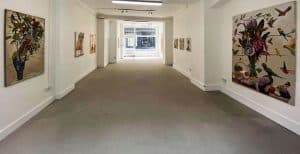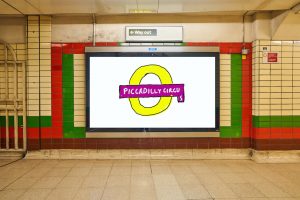Tabish Khan the @LondonArtCritic loves art and visits hundreds of exhibitions a year. But every now and then he comes across something in the art world that doesn’t meet his approval.

If you’re not familiar with the art world and you hear that an artwork or a gallery is commercial, you may think it’s a mere statement of fact or even a compliment – i.e. the art sells for money and the gallery makes money. That must be a good thing right?
Wrong. Commercial is often used as an insult targeted at a certain type of gallery or artist that is deemed by others, especially by the snootiest of art snobs, to be too concerned with making money and not enough with creating challenging art or developing artists.
It’s a slightly ludicrous concept as it implies all other galleries are not-for-profit, and I can say with certainty many galleries who don’t consider themselves ‘commercial’ make a huge amount of money – it’s just they like to imply it’s secondary to displaying great art, when in fact for any gallery that sells art for profit commerciality must be the primary driver to survive.
A better description may be to refer to the former galleries as ‘openly commercial’ galleries, in that they don’t hide the fact that they are commercial enterprises. These galleries are sometimes referred to as Bond Street galleries as that’s where many can be found, or called vanity galleries as the art they display is deemed to be aesthetically pleasing yet lacking in substance – or as one fellow art writer called it ‘shiny art’.
Now you may think what’s wrong with this subjective judgement? After all companies or persons thinking they have superior motives to others is not rare and art is about as subjective a field as there is. Plus some of that ‘shiny art’ in my subjective opinion is terrible.
The downside of demonising the word ‘commercial’, as if it sullies the very idea of art, means that those who want and need to make money from art may feel like art is not a place where money can be made – and for them the art world is off limits. The result being that those who enter art, whether that be as artists or gallerists, will be primarily drawn from wealth or from the upper middle classes where they may have parents, spouses or other networks that can financially support them when starting out.
It’s unfair to see this as pure elitism, as I believe the desire to keep the commercial element of art at bay comes from noble intentions. When art students go to art schools they are seldom taught how to make money from art in case that results in artists simply making art that sells, rather than making the art they think has greatest meaning – regardless of whether it sells or not. After all that’s what we want to see in our museums, thought provoking art that stimulates us not simply art that we’d be willing to buy and hang on our living room wall.
Ultimately those in art are doing it because it’s something they love first and foremost and it’s not just a job that pays the bills, which is often the main attraction for jobs in other corporate sectors. This ‘doing it for the love’ naturally results in people entering the field not for the money – and that’s a lot easier when you already come from wealth.
It’s also one of the reasons why entry level jobs in art pay so little when compared to other graduate roles – when you’ve a host of applicants who aren’t worried about money you can get away with paying a lot less. Conversely if you tried to offer £18k a year to graduates in the banking sector I doubt you’d be flooded with applicants. With very little money for entry level artists and art professionals, diversity will always be an issue as those from less wealthy backgrounds (which is most of the population) will struggle to find a place for themselves in art.
So what can we do about it? There isn’t an easy answer as it’s a complex issue of balancing a recognition of the commercial elements of art without letting it drive the creation of art – and artists and galleries are scattered across this broad spectrum. But for a start we can at least acknowledge that in the for-profit sector that art galleries and artists make money and that’s not something to be ashamed of, but to be celebrated as long as it’s not purely about making money. Only then can we start to have open discussions about poor pay and not have these snooty behind closed door discussions that decide what art is worthy of praise and what isn’t. Commercial isn’t a dirty word, it’s an integral part of the art world today and it’s about time we were transparent about it.
For more in this series, see my thoughts on new galleries opening in London, video art at home, the Hockney roundel, art finds a way, art being free, Online exhibitions, Turner Prize 2019, artist’s request for feedback, the reaction to the shredded Banksy, #FriezeWeek, Blockchain hype, Finding art, Private views, Art itself, Appointment only exhibitions, Artificial Intelligence replacing artists, Everyone’s a Critic, Photo London, The Turner Prize, Art for art’s sake, Conceptual art is complicated, Condo, How performance art is presented in museums, Frieze week floozies, too much respect for an artist’s legacy, opinions not being welcome, an exhibition across three countries, tackling race and gender in art, artist-curators, art fair hype, top 5s and top 10s, our political art is terrible, gap left by Brian Sewell, how art never learned from the Simpsons, why artspeak won’t die, so-called reviews, bad reviews are bad for business, the $179m dollar headline, art fairs appealing to the masses, false opening hours, size matters and what’s wrong with video art.







